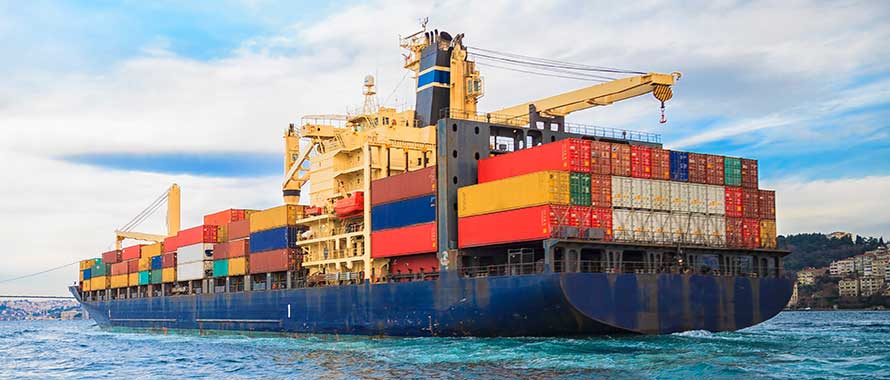As cargo ships get larger, policies must also grow
Over the last decade, the rise of a global economy has spurred increased access to overseas markets, and therefore has sparked businesses to create efficiencies and opportunities to move more goods, faster. The dramatic rise in exports has driven the marine industry to produce new solutions. The result? Dramatically bigger ships.
If one of these ships were foundered (to fill with water and sink) or wrecked, it could cost millions, if not billions of dollars.
Specifically, the introduction of ultra large crude container ships (ULCC), such as the Supermax and Triple-E cargo vessels. In fact, the Triple-E cargo vessel has the capacity to carry 18,000 20-foot containers (TEUs) at insured values of up to $2 billion dollars.
However, with bigger vessels, comes bigger risk. If one of these ships were foundered (to fill with water and sink) or wrecked, it could cost millions, if not billions of dollars. This significant risk increases the importance for companies to protect these assets with the correct Commercial Marine policy.
“Currently, it is a very competitive market for Ocean Marine insurance due to soft market conditions. It is important for all insurers to have a deep understanding of what policies and coverages are available and to be up-to-date on current trends within the industry. For example, insurers will experience an increased exposure if one of these cargo ships were to sink and be rendered a total loss,” said Patrick Barco, National Product Leader, Ocean Marine, Burns & Wilcox Canada.
INDUSTRY IMPACT
ULCCs are changing the landscape of the cargo shipping industry, both in terms of current infrastructure and environmental impacts.
“The introduction of the Supermax cargo ships, designed to carry over 10,000 TEUs, will have a significant impact on the shipping industry,” said Barco. “These vessels will only be able to call at ports that have the facilities to accommodate them, limiting where they can travel.”
Current ULCCs can navigate the Suez Canal and the newly expanded Panama Canal, but are only able to dock at some of the designated world ports.
Despite the challenges that ULCCs pose for global ports, ship owners have a distinct advantage. “ULCCs have a lower fuel cost and the ability to carry more cargo at an additional freight cost,” said Barco. “Insurers writing this class of business would generally subscribe and spread the risk.”
Barco went on to note that ULCC vessels most commonly travel between European and Asian Ports. Since the vessels are energy efficient, they can reduce fuel consumption by about 20 percent. This reduction in fuel consumption can also result in a 20 percent reduction in carbon dioxide emissions, according to reports, making these vessels environmentally friendly.
With oil prices slumping, the economy has slowed. Companies’ overall sales volume has reduced considerably–directly affecting insurers that would indemnify the goods in transit.
Brokers and agents must consider all these factors when searching for the correct Ocean Marine policy.
In the end, one thing remains constant— companies are increasingly functioning in a complex global economy and becoming more intertwined each and every day. As trade continues to grow, global businesses must seek to protect themselves from the risks that come with these changes, and put their trust in experienced insurance professionals that understand these complexities.




